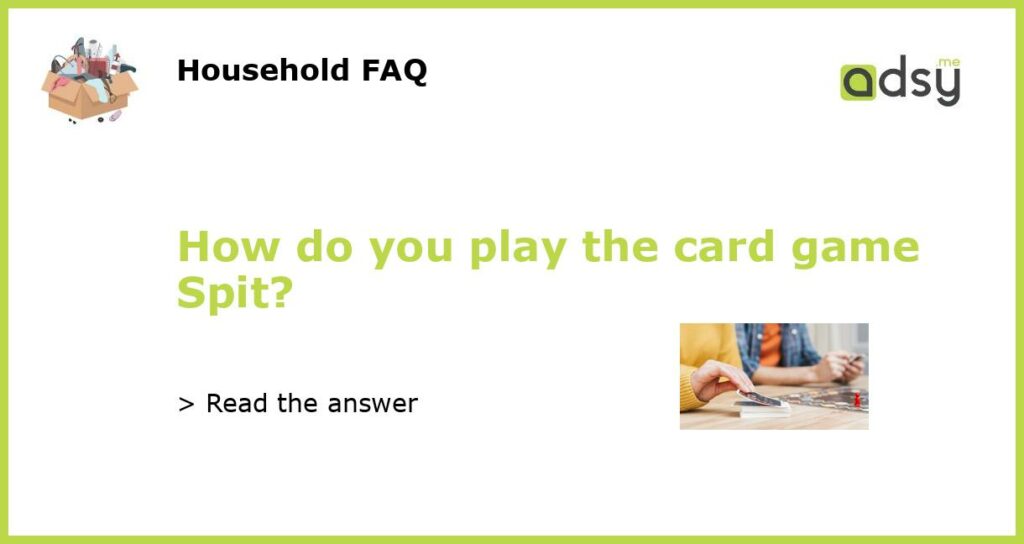What is Spit?
Spit is a fast-paced, two-player card game that requires quick-thinking and rapid card playing. The objective of the game is to be the first person to get rid of all of their cards. The game is also known as Speed, Slam or Spitfire, and can be played with a standard deck of 52 cards.
Setting Up the Game
To set up the game, the deck should be shuffled thoroughly and divided into two equal piles. Each player should then take the top card from their respective deck and place it face down in the center of the playing area. These two cards will form the starting piles for each player.
Playing the Game
Both players then simultaneously play cards from the top of their remaining decks onto the middle piles in ascending order. For example, if the middle pile has a five of diamonds, the players can play a six of any suit on top of it. Players can also play cards onto their own side piles to make it easier to play consecutive cards in ascending order.
If a player ever has no possible cards to play, they can slap their hand onto the middle piles to start a new round. The winner of the round gets to take both middle piles and add them to the bottom of their personal deck. The game continues until all cards have been played and a winner is declared.
Tips and Strategies
Here are some tips and strategies to help you win at Spit:
- Pay attention to your opponent’s moves and try to anticipate where they will play next.
- Always be scanning your own cards for possible moves to make.
- Try to play cards onto your opponent’s middle pile to slow them down.
- Don’t be afraid to slap the pile if you’re stuck in a round.
- Practice makes perfect – the more you play, the quicker and more efficient you’ll become at identifying possible moves.
Spit is a fun and fast-paced card game that is sure to keep you on your toes. With a little bit of practice and some strategic thinking, you’ll be able to beat your opponent in no time!






